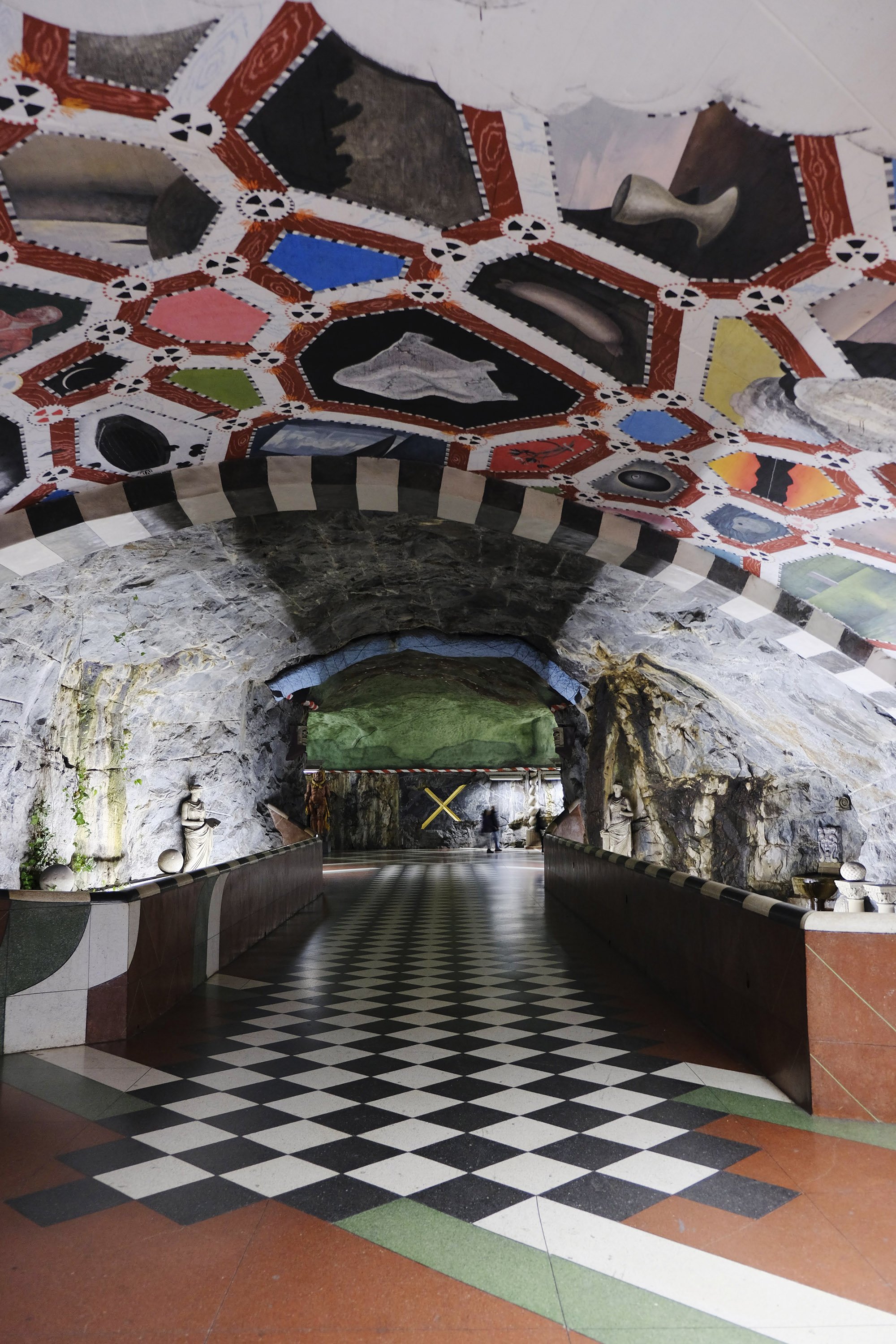The Story of Stockholm's Subway Art: A Unique Underground Gallery
Stockholm's subway system, known as the Tunnelbana, is more than just a mode of transportation; it's a captivating underground art gallery. Over 90 of the 100 stations are adorned with sculptures, mosaics, paintings, and installations, transforming the daily commute into a cultural experience. This unique initiative, which began in the 1950s, has earned Stockholm the title of "the world's longest art gallery."
A Vision for Public Art:
The idea to integrate art into the subway system stemmed from a desire to make art accessible to everyone, regardless of social or economic background. Artists were commissioned to create works that would enhance the commuter experience, spark curiosity, and transform the often mundane underground environment into a vibrant and inspiring space.
Early Beginnings:
The first subway art appeared in the 1950s, with stations like T-Centralen featuring sculptures and mosaics. As the subway system expanded, so did the art collection, with each new station offering a unique artistic expression. Early works often reflected themes of nature, history, and mythology, creating a sense of place and identity.
Artistic Diversity:
Over the decades, the subway art has evolved, reflecting changing artistic styles and social trends. From abstract paintings and sculptures to installations and light displays, the stations showcase a diverse range of artistic expressions. Some stations feature works by renowned Swedish artists, while others provide a platform for emerging talents.
From the 1950s through the 1990s, over 150 artists contributed to the subway's artistic tapestry. Each station reflects the artistic trends and social consciousness of its time. Kungsträdgården station, for instance, features archaeological remnants from the former Makalös Palace, blending history with contemporary creations. At Solna Centrum, vibrant red bedrock is juxtaposed with painted forest scenes, creating an illusion of being outdoors. These diverse artistic expressions, ranging from sculptures and mosaics to paintings and installations, turn a utilitarian space into a dynamic and engaging environment.
The art in the Stockholm subway is not merely decorative; it's a testament to the city's commitment to public art and its accessibility. By integrating art into an everyday space, Stockholm has democratized access to cultural experiences, enriching the lives of its citizens and visitors alike. The "Tunnelbana" stands as a unique example of how public transportation can be transformed into a captivating underground museum, where art and functionality seamlessly intertwine.
Thorildsplan Station
Other Notable Stations:
T-Centralen: The central hub of the subway system, T-Centralen, features a vibrant blue and white cave-like design, adorned with stylized flower motifs and leafy vines.
Stadion: This station, dedicated to the 1912 Olympic Games held in Stockholm, features a rainbow-colored ceiling and walls adorned with silhouettes of athletes.
Tensta: This station showcases a multicultural theme, with murals depicting scenes from around the world and celebrating diversity.
Beyond Decoration:
The subway art serves more than just an aesthetic purpose. It also aims to:
Enhance the Commuter Experience: The art provides visual stimulation and a sense of place, transforming the daily commute into a more enjoyable experience.
Promote Social Inclusion: By making art accessible to everyone, the subway art fosters a sense of community and shared cultural experience.
Spark Dialogue and Reflection: Many artworks address social and political themes, encouraging viewers to engage with contemporary issues and reflect on their surroundings.
Experiencing the Underground Gallery:
Exploring Stockholm's subway art is an adventure in itself. Here are some tips:
Purchase a day pass: This allows you to hop on and off the subway as many times as you like, giving you ample time to explore the stations.
Take your time: Don't rush through the stations. Take your time to appreciate the details, read the descriptions, and let the art inspire you.
Photography: Photography is allowed in the subway stations, so capture your favorite artworks and share your experience with others.
Stockholm's subway art is a testament to the city's commitment to public art and its belief in the power of creativity to transform everyday spaces. So, next time you're in Stockholm, hop on the Tunnelbana and embark on a unique underground art adventure.


